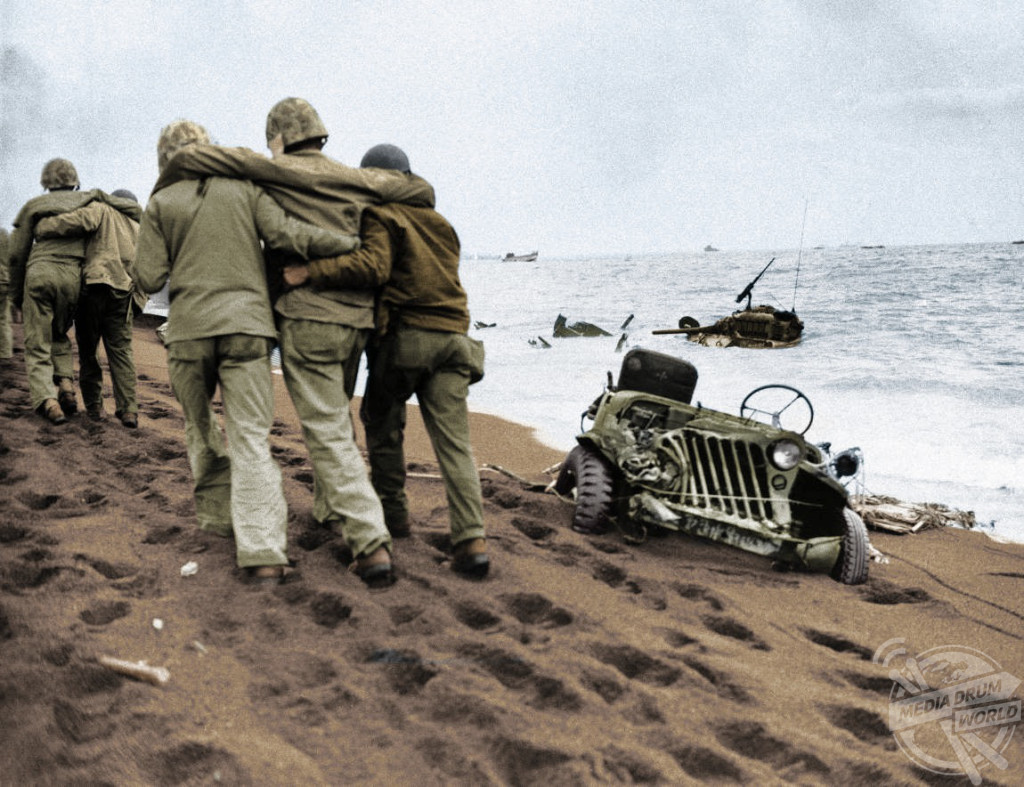
By Mark McConville
THE BRUTAL reality of the Battle of Iwo Jima has been brought to light after a series of striking pictures were expertly colourised.
Incredible images show wounded marines being helped to a medical aid station, two marines lying dead in the sand and a marine watching a Japanese position being shelled.
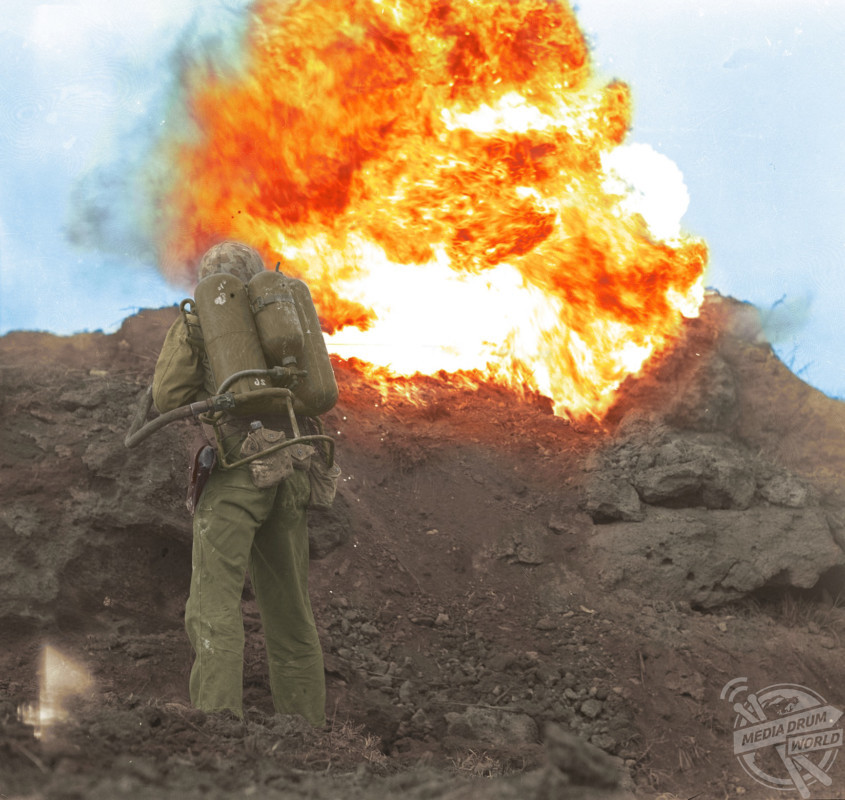
Other stunning shots show riflemen leading marine flamethrower units along a narrow trench, two wiremen running through an open field of enemy fire to establish field telephone contact with positions on the front lines and a marine clearing an enemy position with a M2-2 flamethrower.
The original black and white photographs were painstakingly colourised by lead colourist at Empire Colorizations Nicholas Rodriguez.
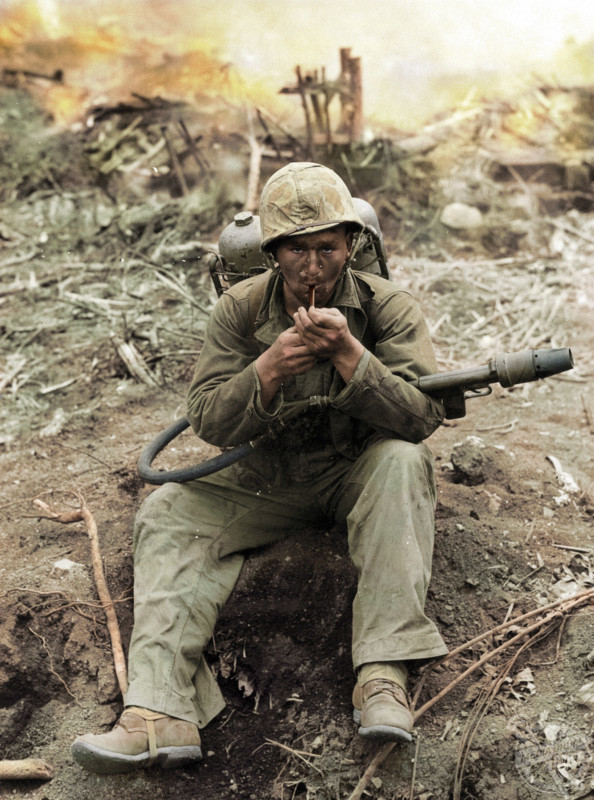
“For lack of a better word, these pictures show reality,” he said.
“The reason I put so much emphasis on accuracy in these photos because it’s not about making these pictures pretty.
“It’s about showing the public what these individuals had to go through and what they saw with their very own eyes. These moments are forever captured with each telling a story in every frame.
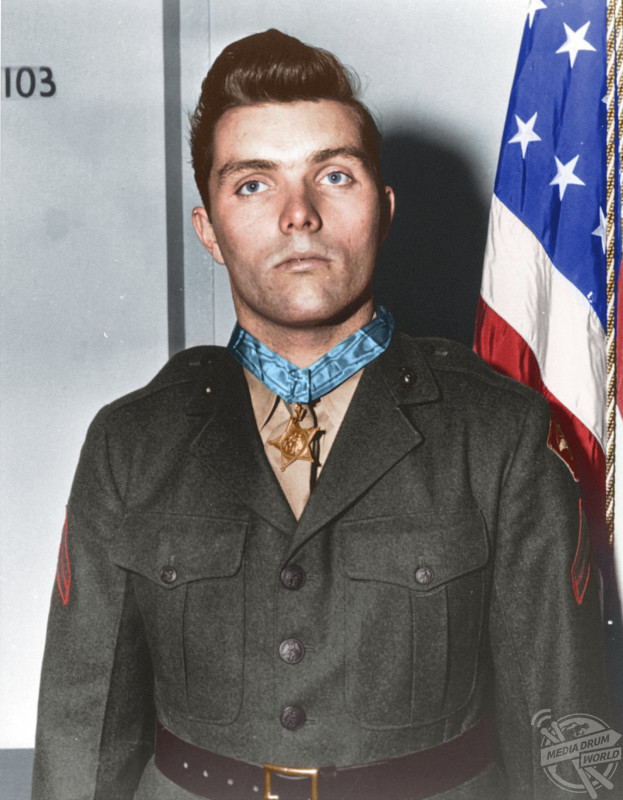
“If there’s one thing I can say, it’s never forget how much history has an impact on our lives. People usually think “It was so long ago, who cares?” because they see images as black and white and they become out of touch.
“People like what they can relate to and with colourised images they get to see history in the making as if it was done yesterday.”
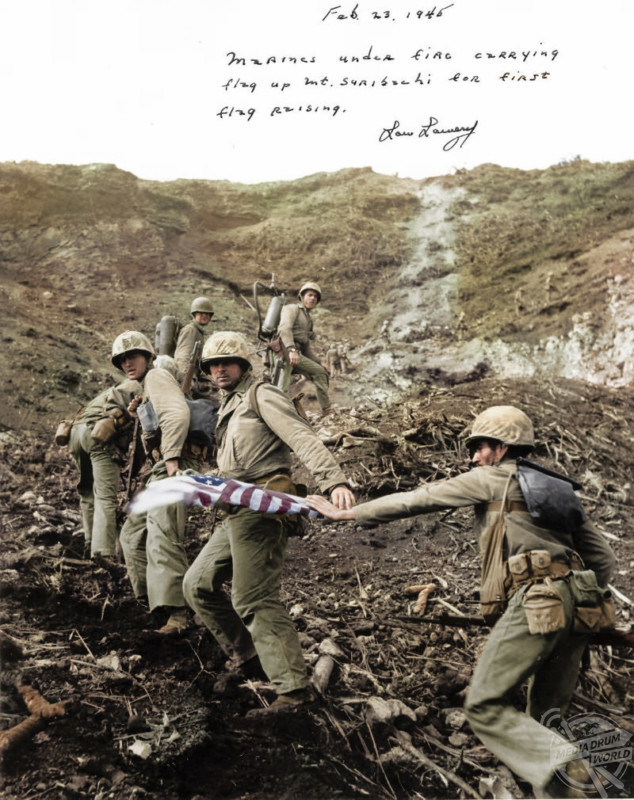
The Battle of Iwo Jima (19 February – 26 March 1945) was a major battle in which the United States Marine Corps landed on and eventually captured the island of Iwo Jima from the Imperial Japanese Army during World War Two.
The American invasion, designated Operation Detachment, had the goal of capturing the entire island, including the three Japanese-controlled airfields, to provide a staging area for attacks on the Japanese main islands. This five-week battle comprised some of the fiercest and bloodiest fighting of the Pacific War of World War Two.
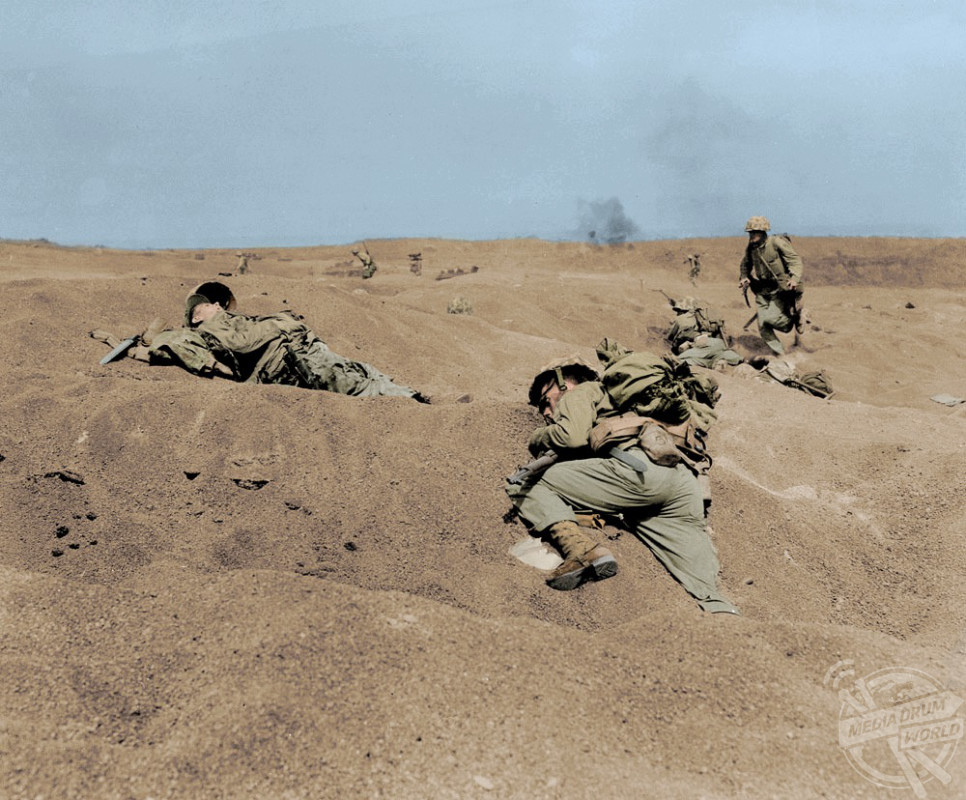
Japanese combat deaths numbered three times the number of American deaths although, uniquely among Pacific War Marine battles, American total casualties (dead and wounded) exceeded those of the Japanese.
Of the 21,000 Japanese soldiers on Iwo Jima at the beginning of the battle, only 216 were taken prisoner, some of whom were captured because they had been knocked unconscious or otherwise disabled.
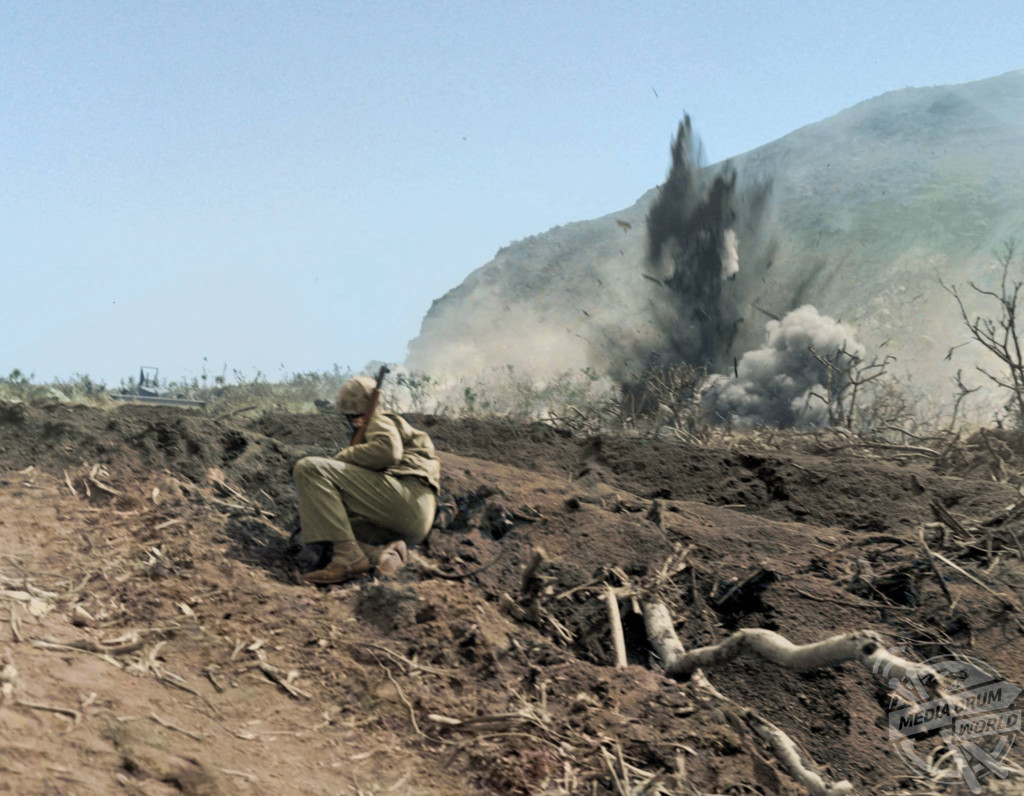
The majority of the remainder were killed in action, although it has been estimated that as many as 3,000 continued to resist within the various cave systems for many days afterwards, eventually succumbing to their injuries or surrendering weeks later.
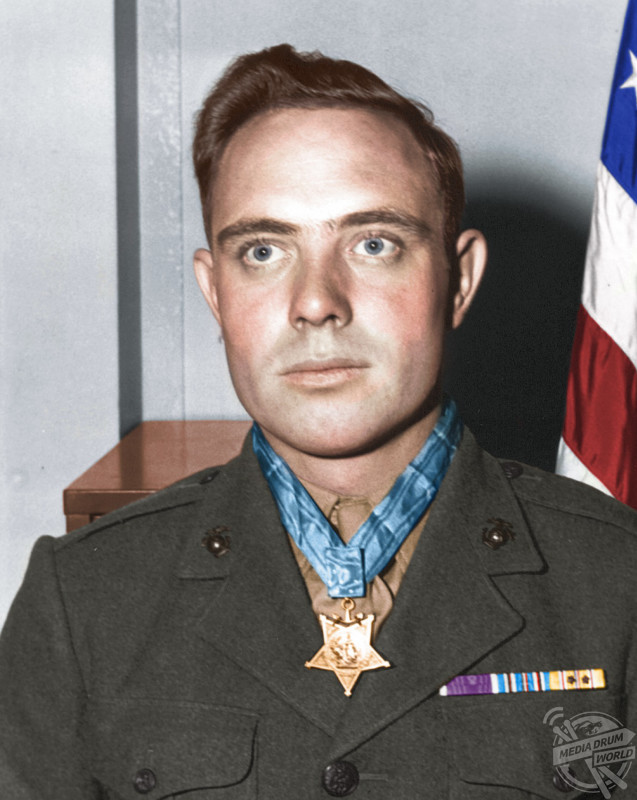
Despite the bloody fighting and severe casualties on both sides, the American victory was assured from the start. Overwhelming American superiority in numbers and arms as well as complete air supremacy—coupled with the impossibility of Japanese retreat or reinforcement, along with sparse food and supplies—permitted no plausible circumstance in which the Americans could have lost the battle.
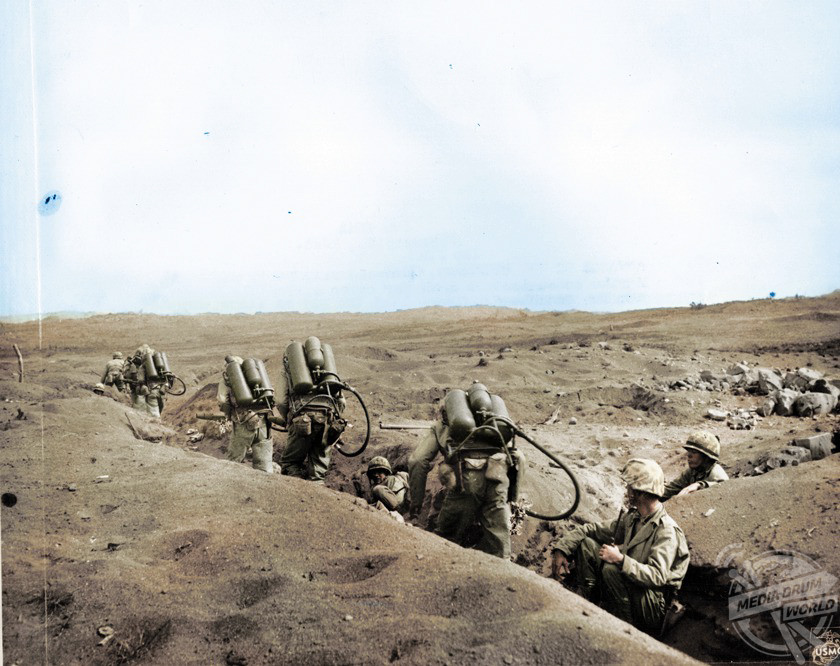
Striking images like these are featured in British author Michael D. Carroll’s new book, Retrographic on the colourisation of historical images. It is available on Amazon now for £16.85.
For more information visit: https://www.amazon.co.uk/Retrographic-Historys-Exciting-Images-Transformed/dp/1908211504






